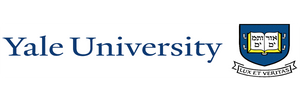- HOME
HOME
- SERVICES
SERVICES
- Study Abroad
Study Abroad
- Study Abroad Counseling
- Parent Counseling
- Test Prep
- College Selection
- Essay Editing and Applications
- Interview Prep
- Post Interview Essay
- Re-applicant Essay
- Resume Review
- Post Result Strategy
- Scholarship Application
- Waitlist Letter
- Letter of Recommendation (LOR)
- Study Abroad Scholarships
- IBDP Diploma Essays
- Essay tutorial
- Career Guidance
- Packages
- FAQ
- Study In India
- Skill Enhancement
- Study Abroad
- DEGREES
- TESTIMONIALS
- TEAM
- OFFERS
- RESOURCES
RESOURCES
- Free Tools
- Undergrad (8th – 12th Grade)
- Masters
- MBA
- M.Phil / Ph.D
M.Phil / Ph.D
- Executive Education
Executive Education
- Career Guidance
- Top Global Universities
- Top MBA Programs
- Admission Officers Insights
- Books
- EVENTS
EVENTS
- FINANCE YOUR EDUCATION
FINANCE YOUR EDUCATION
- MEDIA
“Is online learning the future of education?”

DESCRIPTION
“Is online learning the future of education?”
IS ONLINE LEARNING THE FUTURE OF EDUCATION?
As per World Economic Forum initiated Global Shaper’s Survey 2016, out of the 25,000 respondents, 77.84% have taken online courses at some point. The survey points out that online education is indeed a preferred mode of learning among most millennials.
The growth of online education is a natural outcome of an ever-increasing digital population. Furthermore, online courses allow for personalisation, wider accessibility, flexibility, low cost learning and number of other advantages. Let’s take a closer look at these significant factors that are driving online education mainstream:
1. Effective Learning:
Online courses are designed to allow students greater control over their learning. Their lessons include interactive exercises, meaningful visuals like infographics and multimedia tools to help embed knowledge and gain holistic insights about the topic or subject area. The curricula also allow students to interact with other participants. There are discussion forums, groups where students get to exchange their ideas or responses to topical questions. The purpose is to build a dynamic pedagogical matrix that will allow for collaborative and self-learning.
2. Quality Education:
Quality in education is one of the pressing issues today. According to the Right to Education (RTI) Act, the appropriate pupil teacher ratio is 30:1 for primary classes and 35:1 for upper primary classes. As per a recent District Information System for Education report, 30% of primary and 15% of upper primary schools have PTRs that are higher. There is also a conspicuous shortage of trained teachers. In such a scenario, online courses can be an essential tool to create a satisfying one to one learning experience. It will close the learning gap by providing a direct interface between the instructor and the learner. Students will have a more qualitative learning experience with the opportunity to interact with the teacher anonymously.
3. Flexibility:
The best thing about online courses is they are self-paced and customised to offer convenience and flexibility based on the individual’s needs. There are two types of online courses, synchronous and asynchronous. The synchronous mode is where students attend an online lecture live, and are able to interact with the teacher directly. In an asynchronous mode, though students miss out on direct interaction, but they can access the entire content anytime and anywhere. These options are of immense help to students residing far away from their brick and mortar institutions, students pursuing higher studies or research programs and professionals balancing work and study. Individuals can cater their learning experience in accordance with their personal and/or professional situation.
4. Variety and Diversity:
Online courses provide users the opportunity to learn about just anything. An innumerable number of courses on diverse streams are easily available to anyone. Most of the courses that are free of cost do not prescribe any eligibility criteria. Sometimes the curricula of various courses are graded on the competency level of the learner. The graded categories are beginner, intermediate and advanced; this provides more choice to learners. Top tier universities are offering both for-credit courses and free modules. Previously, the quality of online courses was a cause of concern and much dissatisfaction, but with renowned institutions like Harvard, Stanford, MIT University of Pennsylvania, Cornell, Oxford, to name a few, joining the league, students have access to qualitative material, expert coaching and meaningful feedback. So, one gets to diversify their learning by acquiring new knowledge and developing applicable skills.
5. Accessibility:
The idea behind online courses was to expand the reach of education to students across the globe. With the availability of higher bandwidth, advanced software and sophisticated digital tools, those in the remote areas too can get the scope to education. It would simultaneously help them learn about current trends in diverse sectors related to higher education, industry and professions.
6. Low cost:
Online courses are more inexpensive than face-to-face learning. Prestigious universities are offering many of their online courses either for free or providing access at an affordable fee. For some of the specialised courses at these institutes, there is also provision for students to avail of financial aid. However, the cost does vary across different institutions. Besides, as the system of online education removes logistical barriers related to travelling, eating out, it contributes greatly in an overall cost reduction.
7. Will online education replace traditional learning?
Online education is carving a niche in the education industry. Though it is too early for online education to replace the established conventions, it has its unique advantages that are making it a viable education option. Unlike the traditional education system, it allows students more freedom in learning. However, online courses demand greater self-discipline and self-motivation. Furthermore, social interaction, a common attraction of traditional classroom, is missing on this platform.
Despite the limitations, online courses are becoming popular as they offer a more learner-centric educational approach. Online courses empower individuals to make their own decisions about their learning needs, and gain access to relevant world-class education at their doorstep.
ABOUT THE COMPANY
ReachIvy is a premium education and career advisory that helps aspiring students get accepted into top tier educational institutions globally. We have successful admits at MIT, Columbia, Harvard, University of Pennsylvania, London School of Economics, University of Michigan, Oxford, University of Chicago amongst others.
team of counsellors have also acquired their degrees from premier institutes and are passionate about sharing their experiences with students worldwide.







